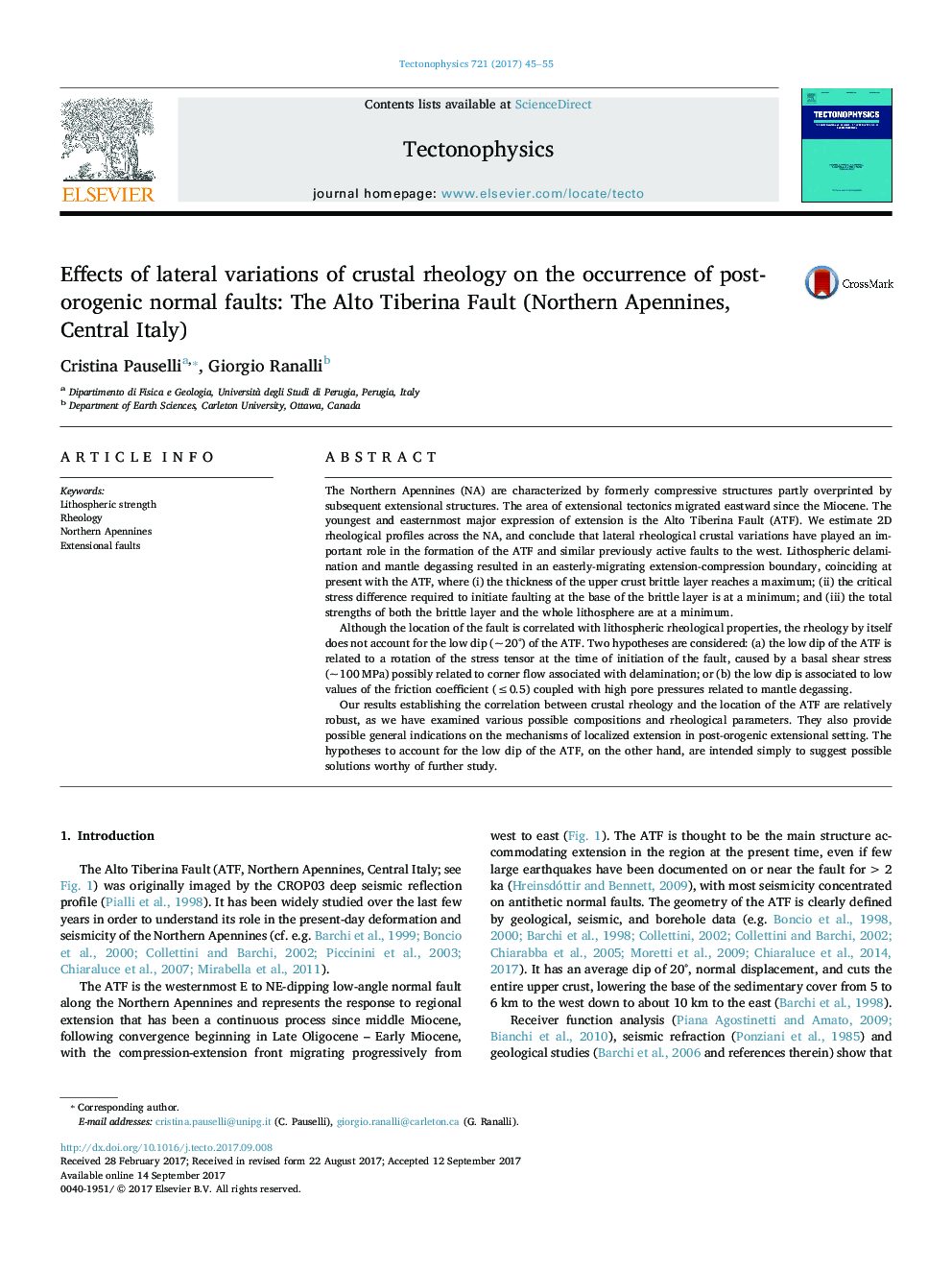| Article ID | Journal | Published Year | Pages | File Type |
|---|---|---|---|---|
| 5781437 | Tectonophysics | 2017 | 11 Pages |
â¢Crustal rheology across the Northern Apennines shows significant lateral variations.â¢Rheological heterogeneity plays an important role in the formation of normal faults.â¢The model may be generally applicable to delamination-related extensional areas.
The Northern Apennines (NA) are characterized by formerly compressive structures partly overprinted by subsequent extensional structures. The area of extensional tectonics migrated eastward since the Miocene. The youngest and easternmost major expression of extension is the Alto Tiberina Fault (ATF). We estimate 2D rheological profiles across the NA, and conclude that lateral rheological crustal variations have played an important role in the formation of the ATF and similar previously active faults to the west. Lithospheric delamination and mantle degassing resulted in an easterly-migrating extension-compression boundary, coinciding at present with the ATF, where (i) the thickness of the upper crust brittle layer reaches a maximum; (ii) the critical stress difference required to initiate faulting at the base of the brittle layer is at a minimum; and (iii) the total strengths of both the brittle layer and the whole lithosphere are at a minimum.Although the location of the fault is correlated with lithospheric rheological properties, the rheology by itself does not account for the low dip (~ 20°) of the ATF. Two hypotheses are considered: (a) the low dip of the ATF is related to a rotation of the stress tensor at the time of initiation of the fault, caused by a basal shear stress (~ 100 MPa) possibly related to corner flow associated with delamination; or (b) the low dip is associated to low values of the friction coefficient (â¤Â 0.5) coupled with high pore pressures related to mantle degassing.Our results establishing the correlation between crustal rheology and the location of the ATF are relatively robust, as we have examined various possible compositions and rheological parameters. They also provide possible general indications on the mechanisms of localized extension in post-orogenic extensional setting. The hypotheses to account for the low dip of the ATF, on the other hand, are intended simply to suggest possible solutions worthy of further study.
